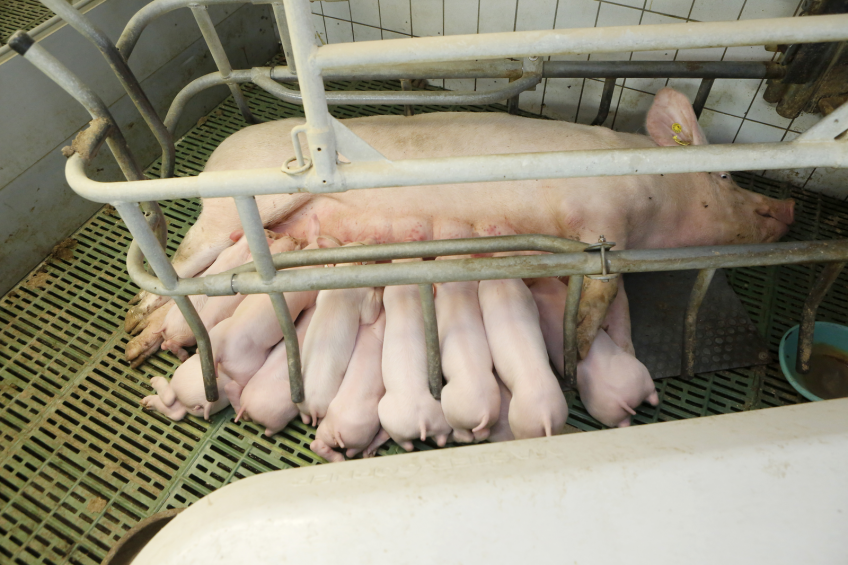Significant decrease of sow numbers in Europe

The current crisis in European pig farming has had a big influence on the number of sows in large parts of Europe. There numbers came down significantly, but what could be reasons behind this reduction?
There is not too much debate about the cause of the current-day crisis in Europe’s pig production: overproduction in combination with Russia having closed its borders. Because of this, a main export market for pork from the European Union (EU) disappeared.
Supply of pork is huge, but demand receded. Private storage regulations in January 2016 temporarily relieved the market, but it hasn’t led to a more permanent come-back of the European pig market.
Crisis in pig industry is creeping forward
In other words: the crisis in Europe’s pig industry is creeping forward. Pig and piglet prices are at low levels and many farms barely manage to produce against cost price. This is a trend that can be seen throughout Europe’s pig industry. Pig producers as well as multipliers do understand that a reduction of the total pig herd is needed. And as a result, sow numbers have already shrunk over the last few years.
In the last 10 years, the number of sows in Europe came down by 3 million, Eurostat figures show. In 2006, the European Union had just over 15.7 million sows, in 2015 this was barely 12.3 million. Still, the reduction hasn’t come to an end yet. It is expected that numbers will continue to decrease.
Spain most important pig country
In absolute numbers, Spain is now the most important pig country in the EU, this can be seen in the development of sow numbers. Although the number of sows decreased in comparison to 10 years ago with about 200,000 sows, in recent years, however a growing tendency can be seen. In 2012 the country had 2.25 million sows, last year there were 2.47 million sows.
Germany & sow numbers
After Spain, Germany is the country with most sows. In 2013, Germany still had about 2.06 million sows. In the last 10 years, the number of sows shrunk by about 20%. In absolute numbers, this means a reduction of 500,000 sows to 1.97 million last year. Germany is becoming more dependent on piglet imports is a logical consequence of this tendency.
Denmark, the Netherlands and France
Denmark, the Netherlands and France also held over 1 million sows in 2015. Eurostat counted 1.24 million sows in 2015 in Denmark, also 170,000 sows fewer than 10 years ago, when 1.41 million sows could be seen. The Netherlands counted 1.05 million sows in 2015 – from 1.11 million in 2014. In France, a decreasing tendency can be seen over the last decade: sow numbers have shrunk by 250,000 animals to 1.01 million sows in 2015.
The largest reduction, however, both percentage-wise as well as in absolute numbers, can be seen in Poland. Sow numbers came down by roughly 50% in 10 years’ time to 814,000 animals in 2015. In 2016, Poland still had 1.79 million sows.
Read also: The Russian pig ban – 2 years on
What were the consequences of Russia’s ban on EU pigs, pork and specific pig products? The country stopped importing almost 2 years ago. Time to reflect.
Weaner pig cost prices are different in EU
Cost prices are different throughout the European Union. Sweden tops the list; cost price for a 30 kg weaner pig is €76.10, according to figures by InterPIG and the Agricultural Economics Institute (LEI), part of Wageningen University, the Netherlands. Spanish multipliers, on the other hand, have lowest costs with €50.02 per weaner pig. In Denmark, this price was €53.00, in the Netherlands €56.30 and in Germany €61.20.
The difference between cost price and revenue is rather big throughout Europe, in some countries this is over €20, which clearly shows that the sow business is not doing well.
Lack of confidence to produce pigs
This translates into a lack of confidence to fill up barns with new pigs. Especially the uncertainty about the pig price development in a difficult market plays a role here. In some countries, pig barns are simply left empty as producers can’t afford to get rid of manure. Only in the third quarter of this year a significant improvement is expected.











